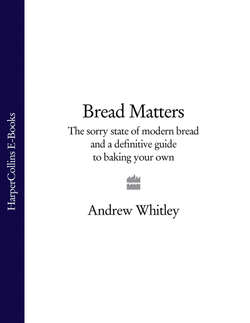Читать книгу Bread Matters: The sorry state of modern bread and a definitive guide to baking your own - Andrew Whitley - Страница 71
Bread machine mixes
ОглавлениеNot so long ago, the market for home-baking flours was in steep decline. Then came automatic breadmakers and an opportunity for mills to ‘add value’ by presenting what they had formerly sold as ‘flour’ as ‘bread machine mix’. Sometimes it is just a matter of new packaging, but the mixes may include some additional ingredients. Things such as nuts and seeds are obvious and will be easily visible. But ‘improving’ additives, such as vitamin C and alpha-amylase enzymes, may be there too – presumably to help ensure that the machine produces a perfect result every time, ‘untouched by human hand’, as they used to say. Many big mills routinely add amylase to the flours they supply to bakeries. It is an enzyme that occurs naturally in wheat and its role in breadmaking is to convert starch granules into maltose, which can then be fermented by baker’s yeast to produce the carbon dioxide gas that expands the dough. Some wheats do not have enough natural alpha-amylase and so the miller adds extra; most commercial amylases are now derived by genetic engineering from fungi such as Aspergillus oryzae.
The presence of additives, hidden or declared, in mixes for bread machines may not be to everyone’s liking. The idea that this way of making bread requires a special mix suggests just another attempt to create a dependent consumer – whereas surely the whole point of making your own bread is to enjoy some independence from the increasingly monolithic food system. Those who share this view can be reassured that it is perfectly possible to make good bread in a bread machine using ordinary flour, yeast, salt and water.
